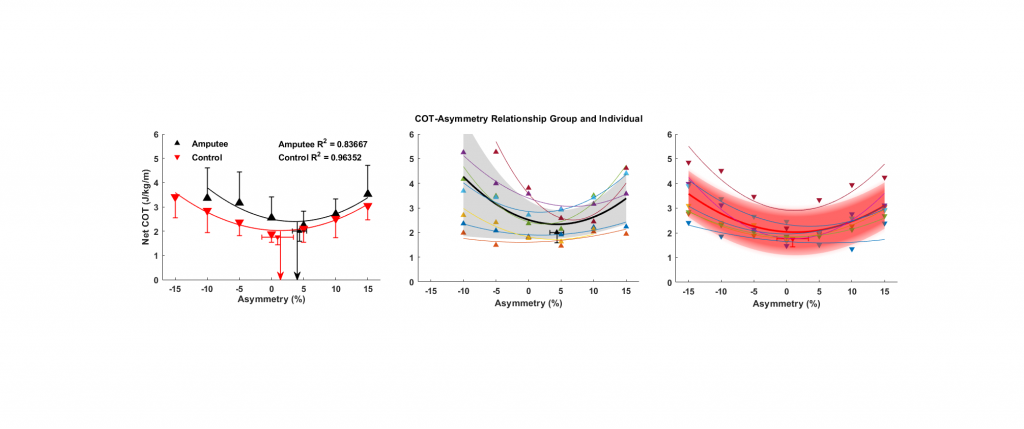Role of Metabolic Energy Expenditure with Walking
Role of Metabolic Energy Expenditure with Walking
Minimizing metabolic energy expenditure is one of the main objectives that determine preferred gait patterns, but it is unclear how it affects gait patterns in response to non-preferred patterns, perturbed environments, and people with disabilities. We have two projects that are trying to understand the role of metabolic energy expenditure while walking with preferred and non-preferred patterns in people with and without lower limb amputation. Currently, the most widely utilized method of determining metabolic energy expenditure is indirect calorimetry, which requires five minutes of steady-state activity for accurate estimation. We are using indirect calorimetry to determine if metabolic energy expenditure is the primary objective of preferred walking patterns in able-bodied individuals and active individuals with unilateral lower limb amputation. Indirect calorimetry requires a controlled lab setting and limits the ability to measure energy expenditure of non-steady state movements such as walking over unsteady surfaces or in people who cannot maintain steady-state walking for five minutes, such as less active people with lower limb amputation. We hope to remove the need for prolonged steady-state collections and the lab environment, but first we will try to find surrogates for indirect calorimetry using other physiological signals. We are using electromyography (EMG), center of mass mechanics, heat flux, and Galvanic skin response to create a method of collecting accurate energy expenditure data in real-time to overcome current indirect calorimetry limitations. The long-term goal is to analyze energy expenditure during daily activities with this method on a variety of populations, such as people ambulating with prostheses or who have had a stroke, so we can improve device design and rehabilitation programs.
If you are interested in participating in the study:
Presented Work
- McGill & Wedge 2022 APTA CSM Effects of Reducing Vertical Ground Reaction Forces on Metabolic Energy Expenditure During Loaded Treadmill Walking
- Abstract
- Bruns & Wedge 2021 Energy Expenditure Surrogate During Locomotion
- Abstract
- Poster
- Collins & Wedge 2021 ECU CAHS Research Day Real-Time Metabolic Energy Expenditure to Study Gait Changes
- Abstract
- Poster
- Wedge & Umberger 2020 APTA CSM Stance Phase Symmetry and Metabolic Cost of Locomotion in People with Unilateral Transtibial Amputation
- Abstract
- Poster
